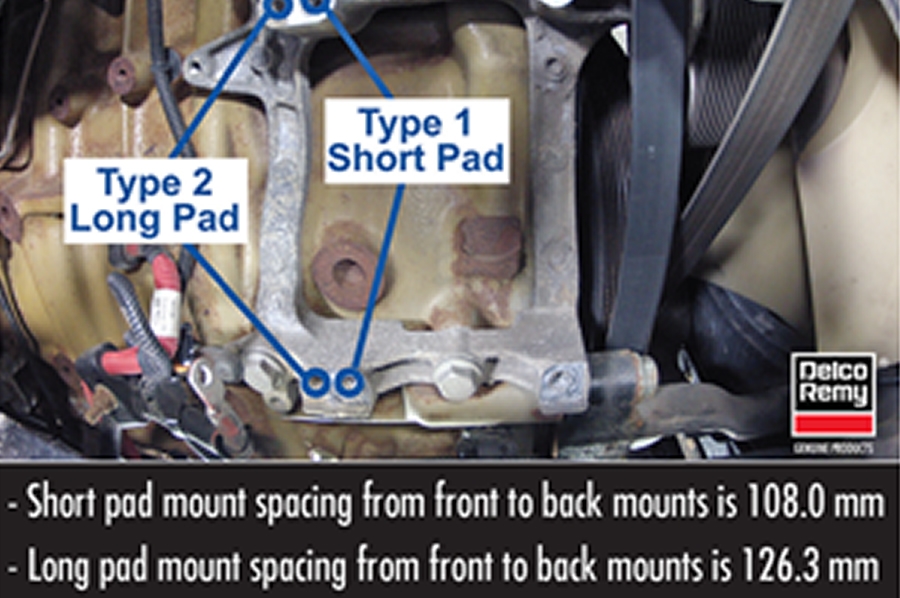Sometimes the front and back mounting holes on a pad mount alternator are different sizes. The reason for that starts with understanding alternator pad mounting for heavy duty diesel engines..
Manufacturers follow the SAE standard with six holes drilled and tapped into the engine block or mounting bracket. This is done to accommodate both long and short mounting pad arrangements.
Equipping the engine with both mounting arrangements allows for flexibility during assembly and throughout the service life. Both long and short pad mount style alternators will interchange on an application that shares a common front mount position.
The pair of tapped holes closest to the drive belt on the block or bracket will always be used to properly secure and align the alternator drive end and pulley to the accessory drive belt system. Thus, the corresponding holes on the pad mount are smaller in size and help to ensure a tight fit to the mounting bolt. This ensures proper pulley alignment, which is essential for belt life and system reliability.
The back two sets of tapped holes on the block or bracket are spaced to accommodate either a long pad or short pad mount alternator.
The corresponding holes on the pad mount alternator may be larger in diameter. This allows variations in the bracket and alternator assembly. These holes are mainly for securing the alternator in position.
When mounting an alternator, the mounting bolts should be placed in the drive end first, and tightened only after the other end has been properly placed into position.
The larger mounting holes allow the motor to align and be positioned with the register for proper operation. It does not negatively impact performance in any way.
.






